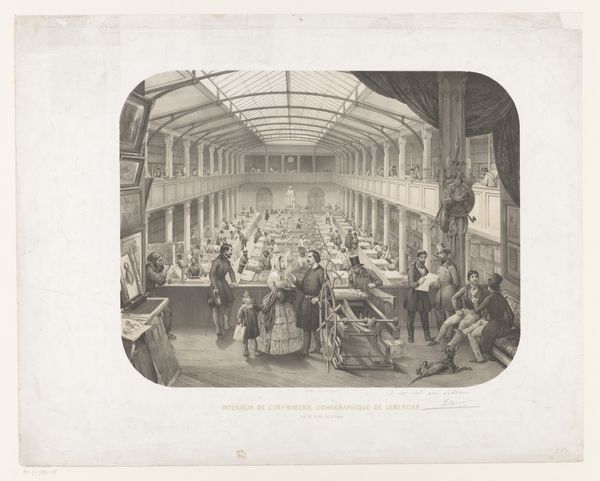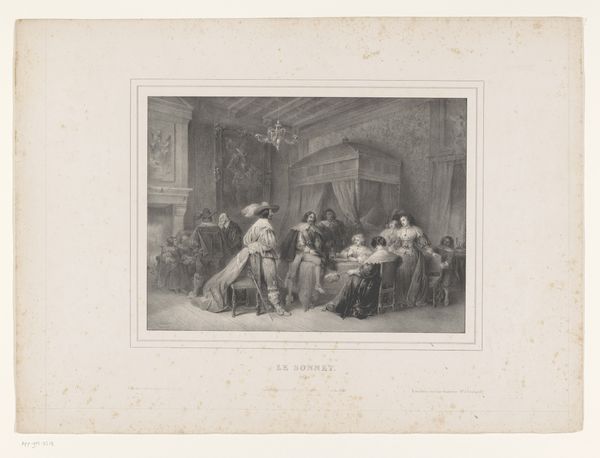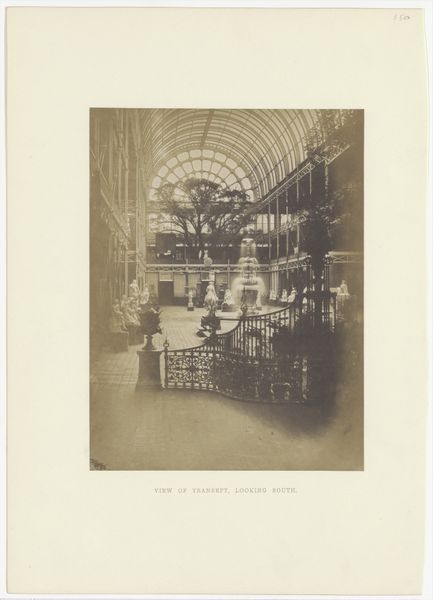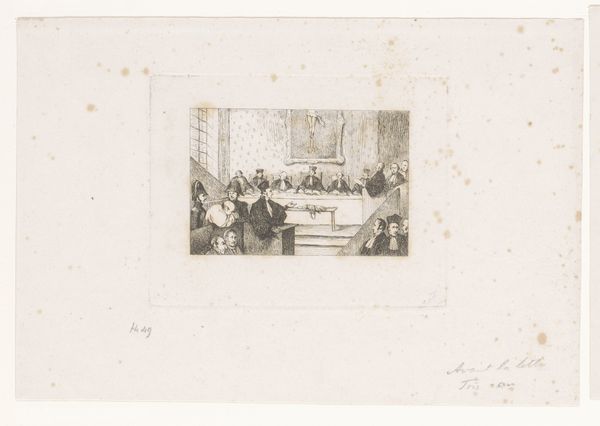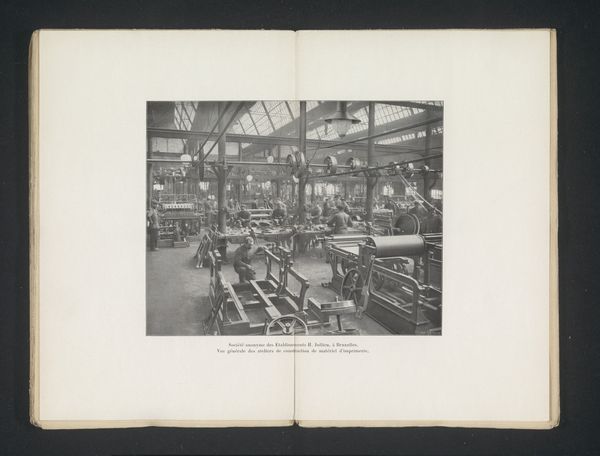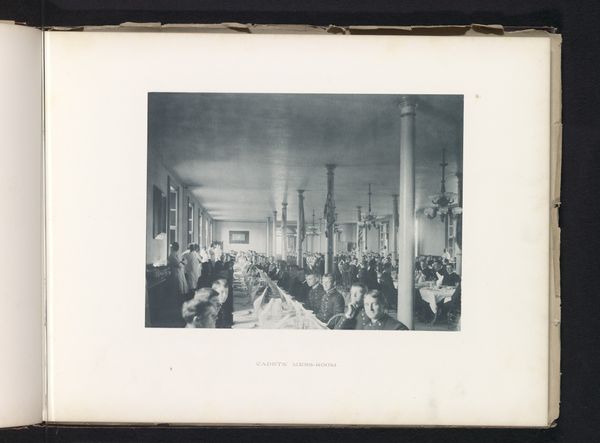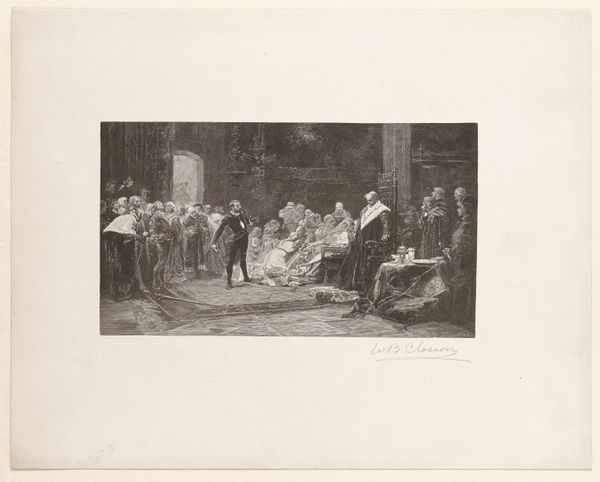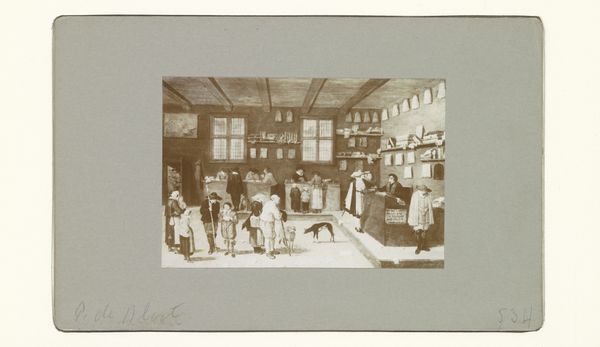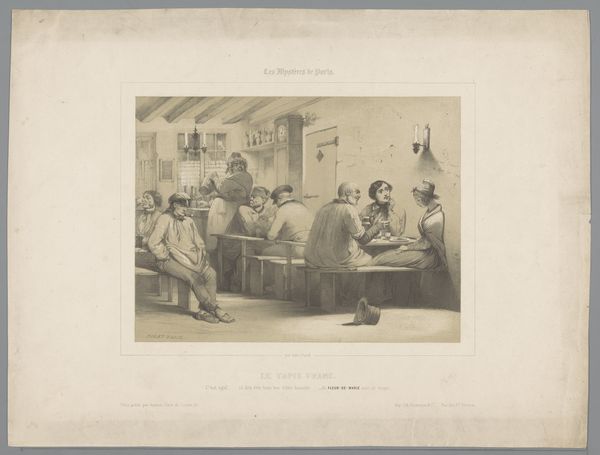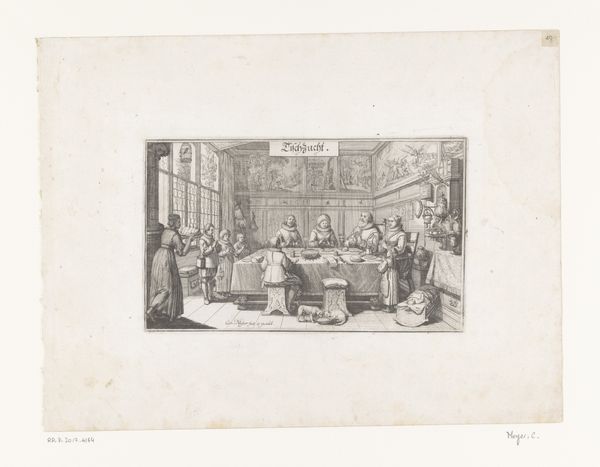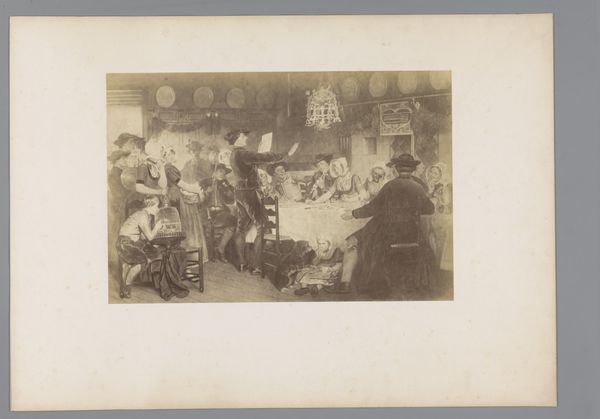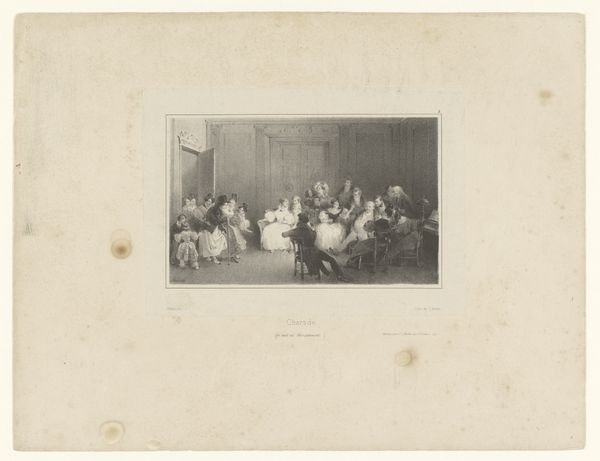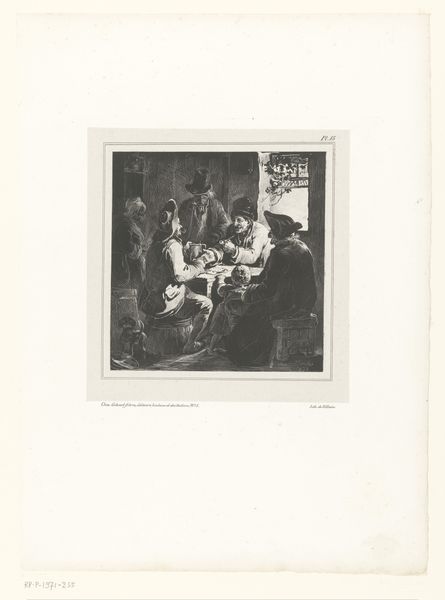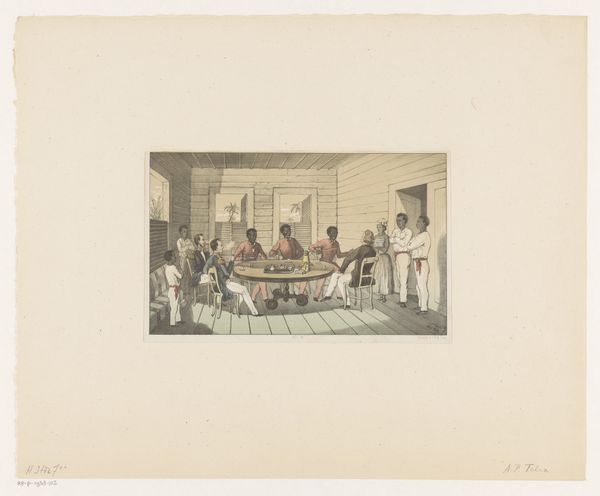
print, etching, engraving
# print
#
etching
#
cityscape
#
genre-painting
#
academic-art
#
engraving
#
realism
Dimensions: height 188 mm, width 254 mm
Copyright: Rijks Museum: Open Domain
Auguste André Lançon created this print of the British Museum's reading room sometime in the mid-19th century. It's an image deeply embedded in the social and institutional history of knowledge production. The print depicts a space designed to democratize knowledge, at least for a certain segment of society. The British Museum Reading Room, completed in 1857, was intended as a hub for scholars and researchers, a place where the vast collection of the British Museum could be accessed. Look closely, and you’ll notice the architectural grandeur, designed to inspire awe and reverence for learning. But who had access to this space? The attire of the readers suggests a predominantly middle- to upper-class clientele, reflecting the social stratification of Victorian England and the uneven distribution of educational opportunities. To truly understand this image, one must delve into the archives, examining the admission policies of the British Museum and the demographics of its readership. We should consider the role of institutions like the British Museum in shaping cultural values and reinforcing social hierarchies. Lançon's print is a window into a world where knowledge was power, but access to that power was far from universal.
Comments
No comments
Be the first to comment and join the conversation on the ultimate creative platform.
